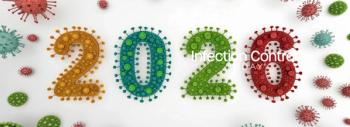
Washing Away Illness
By Jennifer Wider, MD
With holiday gatherings, New Year celebrations, and constant traveling, handwashing is one of the most important ways to prevent getting sick and spreading germs. Many illnesses, including the common cold, are spread by not washing hands properly with soap and water. According to statistics from the National Library of Medicine, the common cold accounts for approximately 22 million missed days of school and 20 million absences from work (which includes time away from work to care for sick children).
According to experts at the Canadian Center for Occupational Health and Safety, Handwashing is the single most effective way to prevent the spread of infections. You can spread certain germs by touching another person even casually. You can also catch germs when you touch contaminated objects or surfaces and then touch your face.
Germs are everywhere. As people move through their day, touching objects, surfaces and other people, germs build up on their hands. If people touch their noses, mouths or eyes without thoroughly washing their hands, the germs may lead to illness. Although these germs cannot totally be eliminated, washing hands frequently can help limit the transfer of viruses, bacteria and other harmful pathogens.
Unfortunately, too many people fail to wash their hands properly. According to the Centers for Disease Control and Prevention (CDC), the correct way to wash your hands is:
- Wet your hands with clean, running water (warm or cold) and apply soap.
- Rub your hands together to make a lather and scrub them well; be sure to scrub the backs of your hands, between your fingers, and under your nails.
- Continue rubbing your hands for at least 20 seconds. Need a timer? Hum the "Happy Birthday" song from beginning to end twice.
- Rinse your hands well under running water.
- Dry your hands using a clean towel.
To prevent illness, the CDC also recommends:
Always wash your hands before:
- Preparing food or eating.
- Treating wounds, giving medicine, or caring for a sick or injured person.
- Inserting or removing contact lenses.
Always wash your hands after:
- Preparing food, especially raw meat or poultry.
- Using the toilet or changing a diaper.
- Touching an animal or animal toys, leashes or waste.
- Blowing your nose, coughing or sneezing into your hands.
- Treating wounds or caring for a sick or injured person.
- Handling garbage, household or garden chemicals, or anything that could be contaminated such as a cleaning cloth or soiled shoes.
Wash your hands whenever they look dirty, or after using public transportation. Keeping your hands clean is one of the most important ways we can prevent illness and spreading germs. If soap and water are not available, waterless cleansers are a viable alternative. Make sure to use an alcohol-based hand sanitizer that contains at least 60 percent alcohol to clean hands.
This holiday season show your love by reducing the spread of germs.
Jennifer Wider, MD is a contributing writer and a medical advisor for the Society for Womens Health Research (SWHR), a national non-profit organization based in Washington D.C.
Source: Society for Women's Health Research (SWHR)
Â
Newsletter
Stay prepared and protected with Infection Control Today's newsletter, delivering essential updates, best practices, and expert insights for infection preventionists.






